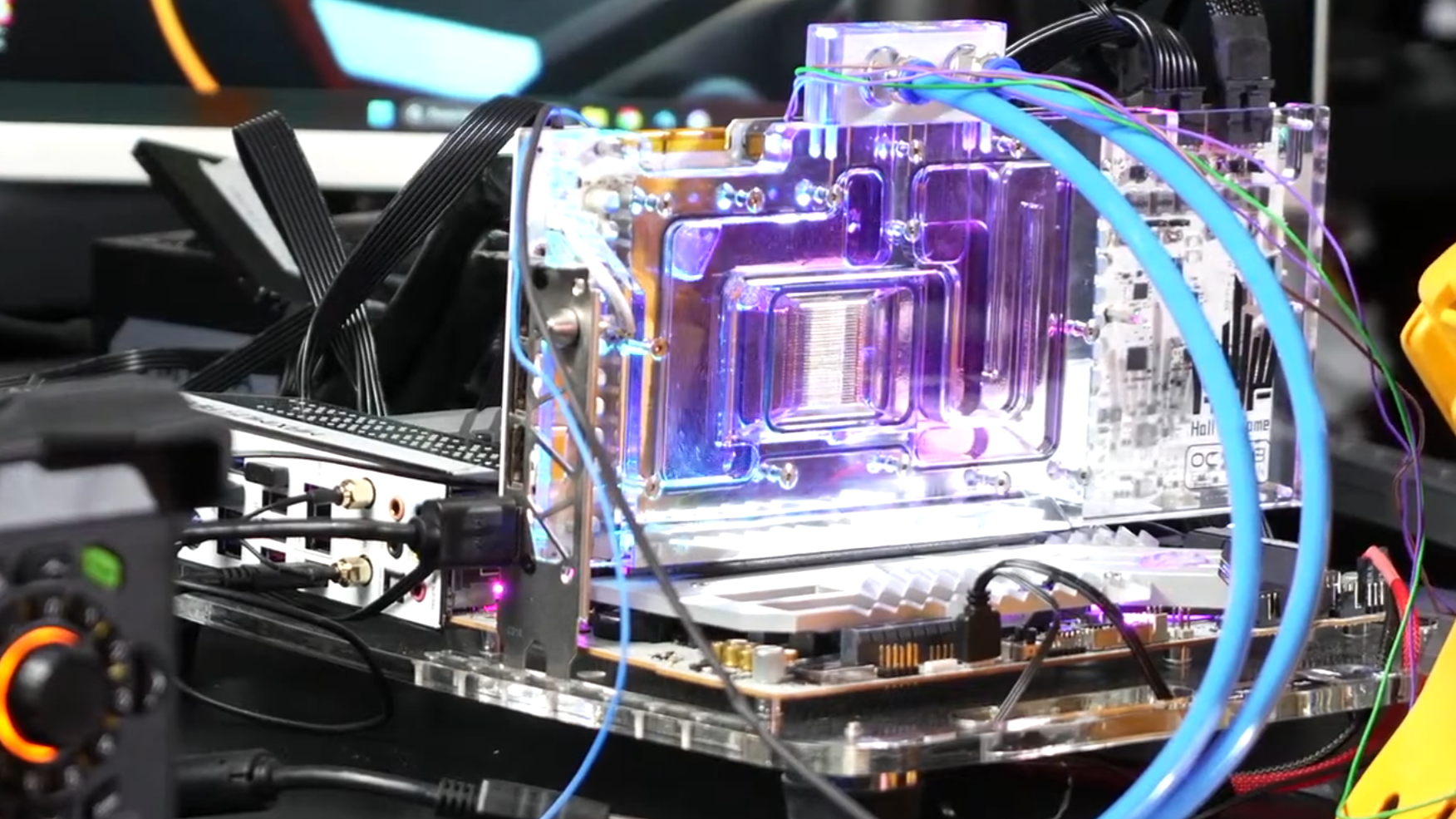
Yesterday, Brazilian tech channel TecLab showcased a custom-built GeForce RTX 4090 Super, utilizing liquid cooling along with the PCB and faster VRAM of a repurposed RTX 3090 Ti. Testing confirms that the beastly card can achieve performance up to 40% faster than the original RTX 4090, at least when testing Unigine Superposition at 8K. Considering the power of the original RTX 4090, managing performance gains of that caliber is quite impressive. While the stock RTX 4090 scored 12479 in Unigine Superposition at 8K, the fully-tweaked 4090 Super achieved 17454, or a 40% improvement. However, there is a caveat to these GPU numbers, which we'll address below.
RTX 4090 vs RTX 4090 Super Specifications
So, how can the RTX 4090 Super be 40% faster than the RTX 4090 if it's still mostly the same graphics card? Better cooling and much faster GPU core and VRAM frequencies still don't quite explain these performance gains. That's because they don't — the actual performance gains are closer to 16%.
The RTX 4090 Super's 8K Unigine Superposition result of 17454 was achieved with all its overclocking applied and driver LOD tweaks. Without driver LOD tweaks, the best the 4090 Super manages in 8K Superposition is 14537 compared to the original 4090's 12479, which is only a 16% performance improvement.
While impressive, why do the LOD tweaks inflate the results, and why should they even be considered? First, let's clarify what's involved with the LOD tweaks.
The LOD tweaks referred to in the coverage of this custom graphics card refer to the Nvidia GPU driver's management of LODs in 3D rendering. LOD stands for Level of Detail and refers to how various in-game models, effects, and textures increase or decrease in resolution based on proximity to the player. Those most determined to squeeze out extra performance in a game or a benchmark can apply driver-level LOD tweaks that make graphics worse and performance better, depending on severity.
This project would have been impressive, with or without the LOD tweaked benchmark. However, including it all seems misleading, particularly if you opt for 8K testing. A 16% faster RTX 4090 still makes for a wickedly fast graphics card, though, and that's still an impressive achievement. It's certainly more ambitious than creating a Noctua-themed version of the RTX 4090, though that project seems much more practical.







